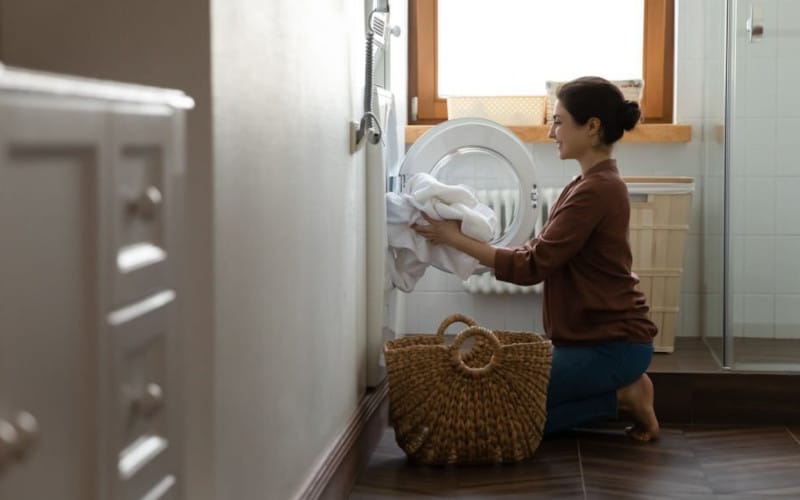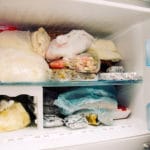If you own a Samsung dryer, it’s possible that you’ve experienced the issue of the dryer not spinning. This problem can be caused by a number of different things, but luckily, there are some solutions that you can try. In this article, we’ll explore some of those solutions so that you can get your Samsung dryer up and running again.
Solution 1: Drive Belt
The drive belt is a long, thin belt that goes all the way around the dryer drum, around a tension pulley, and then around the drive motor pulley. The belt may break from daily use over time. If the belt is damaged, the dryer will not operate.
Reach into the machine and turn the drum by hand to check if the belt is still intact. If the belt is damaged, it will need to be replaced.
Solution 2: Idler Pulley
The idler pulley is a small wheel that applies tension to the drive belt. The pulley can become frozen from lack of use or age, which will prevent the dryer from operating. Inspect the idler pulley to see if it is damaged.
If the pulley is not damaged, try spinning it by hand to see if it is frozen. If the pulley is frozen, you will need to replace it.
Related: Samsung Fridge Not Cooling
Solution 3: Drive Motor
The drive motor powers the dryer drum by turning the belt. If the motor is defective, the dryer will not operate.
To check the motor, turn off the power to the dryer first. Then, remove the drive belt from the motor pulley. Next, use a multimeter to test the continuity of the motor windings. If there is no continuity, the motor will need to be replaced.
Solution 4: Thermostat
The thermostat controls the dryer temperature. If the thermostat is defective, it may not provide the proper amount of heat, which can cause the dryer to shut off.
To test the thermostat, first, disconnect the power to the dryer. Then, use a multimeter to test the continuity of the thermostat. If there is no continuity, the thermostat will need to be replaced.
Solution 5: Door Switch
The door switch prevents the dryer from operating when the door is open. If the door switch is defective, it may not prevent the dryer from running even when the door is open.
To test the door switch, first, disconnect the power to the dryer. Then, open the dryer door and use a multimeter to test for continuity between the two terminals on the switch. If there is no continuity, the switch will need to be replaced.
With these solutions, you should be able to get your Samsung dryer up and running again in no time.
Solution 6: Drum Support Bearing
The rear of the dryer drum is supported by the drum bearing. This bearing wears down with time. If the drum bearing becomes worn, it may put too much strain on the motor and cause the dryer to stop in mid-cycle or not turn at all.
Remove the dryer belt and try hand-turning the drum to determine if the drum bearing is worn. If the drum can be turned easily, then the bearing needs to be replaced.
Solution 7: Thermal Fuse
The dryer may have a blown thermal fuse. The thermal fuse is located on the blower housing or at the dryer’s heat source such as the heating element on electric dryers or at the burner on gas models. A blown thermal fuse will cause the dryer to stop heating. To check the thermal fuse, first, disconnect the power to the dryer.
Then, remove the back panel of the dryer and locate the fuse. Use a multimeter to test for continuity through the fuse. If there is no continuity, then the fuse needs to be replaced.
Solution 8: Drum Slide
The dryer drum slides help to support the front of the drum as it rotates. Over time, these slides can wear down and cause the drum to become unbalanced. This can create a thumping noise during the dryer cycle. To check the slides, open the dryer door and remove the lint screen.
Then, remove the screws that hold the front panel in place and carefully pull the panel off. Next, check the slides for wear and replace them if necessary.
Solution 9: Gas Valve Solenoid
The gas valve solenoids open the gas valve when the dryer is turned on. If a solenoid is defective, the dryer won’t heat. To check the solenoids, first, disconnect the power to the dryer. Then, remove the back panel of the dryer and locate the gas valve.
There are two solenoids on the gas valve—a high limit thermostat and a gas valve coil. Use a multimeter to test the continuity of both solenoids. If there is no continuity, then the solenoid will need to be replaced.
Solution 10: Igniter
The igniter produces a hot glow to ignite the gas in the burner assembly. If the igniter is defective, it may not produce enough heat to ignite the gas. As a result, the dryer won’t heat.
To test the igniter, first, disconnect the power to the dryer. Then, remove the back panel of the dryer and locate the igniter. Use a multimeter to test for continuity through the igniter. If there is no continuity, then the igniter will need to be replaced.
Solution 11: Drum Roller Axle
The rear of the drum has two or more support rollers, with some dryers having two more in front of the drum. To function correctly, the rollers must be able to spin freely. The drum roller axle can wear down over time, causing the rollers to bind.
If the rollers become worn or begin to bind, the motor will have to work harder to turn the drum, which can cause the motor to overheat and shut down.
To check the rollers, remove the dryer belt and try hand-turning the drum. If the drum is difficult to turn or if you hear a grinding noise, then the rollers need to be replaced.
Solution 12: Clean the Venting System
If the venting system is clogged, it can cause the dryer to overheat and shut down. To clean the venting system, first, disconnect the power to the dryer. Then, remove the exhaust hose from the back of the dryer and vacuum out any lint that may be inside the hose.
Next, vacuum out the lint trap inside the dryer. Finally, vacuum out the venting system itself. Be sure to check for any blockages along the entire length of the venting system.
Solution 13: Clean the Lint Screen
The lint screen is located in the dryer’s door opening. Over time, lint can build up on the screen, causing the dryer to overheat and shut down. To clean the lint screen, remove it from the dryer and vacuum out any lint that may be on it.
If the lint screen is damaged, replace it with a new one.
Solution 14: Thermostat
The thermostat controls the dryer’s temperature. If the thermostat is defective, it may not shut off the heating element when the clothes are dry, causing the dryer to overheat and shut down.
To check the thermostat, first, disconnect the power to the dryer. Then, remove the back panel of the dryer and locate the thermostat. Use a multimeter to test the thermostat for continuity.
If there is no continuity, then the thermostat will need to be replaced.
Conclusion
These are the most common solutions for a Samsung dryer that won’t start. With these solutions, you should be able to get your dryer up and running again in no time.






